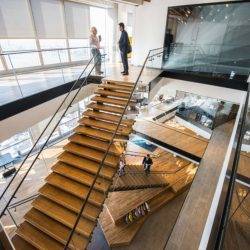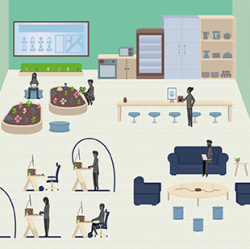February 1, 2017
No matter how engaged they feel, key talent will leave for a fresh work challenge 0
Most employers buy into the idea that the more engaged their employees the likely they are to leave, but a new survey suggests that whether or not staff feel engaged or are happy with their salary, they won’t stay on board once they’re ready for a new work challenge. This is according to research by Korn Ferry which claims that the No. 1 reason professionals would hunt for a new job in 2017 is to seek a more challenging position, while the quest for greater compensation comes in almost dead last as a reason to leave. In the survey of nearly 2,000 professionals, nearly three-quarters (73 percent) said that if they plan on being in the job market this year, it’s because they’re looking for a challenge. Trailing far behind, 9 percent said they are looking because they either don’t like their company or their efforts aren’t being recognized, 5 percent say their compensation is too low, and 4 percent say they don’t like their boss.





















 Amos Tversky and Daniel Kahneman introduced the concept of Loss Aversion in 1984, highlighting people’s tendency to strongly prefer avoiding losses to acquiring gains. Most studies suggest that losses are twice as powerful, psychologically, as gains. Lose £100 and we will feel a remorse that easily outweighs winning £100. In a similar fashion we find it very hard to see future positives when confronted with short term loses. We understand easily what we have lost but cannot imagine what there is to be gained. Furthermore, as Frederic Bastiat wrote in an 1850 paper, “That Which is Seen, and That Which is Not Seen”, man has a tendency to “pursue a small present good, which will be followed by a great evil to come, rather than a great good to come, at the risk of a small present evil”. Put these together and it is no wonder that, by and large, the future of work, corporate real estate and the workplace is so widely misunderstood.
Amos Tversky and Daniel Kahneman introduced the concept of Loss Aversion in 1984, highlighting people’s tendency to strongly prefer avoiding losses to acquiring gains. Most studies suggest that losses are twice as powerful, psychologically, as gains. Lose £100 and we will feel a remorse that easily outweighs winning £100. In a similar fashion we find it very hard to see future positives when confronted with short term loses. We understand easily what we have lost but cannot imagine what there is to be gained. Furthermore, as Frederic Bastiat wrote in an 1850 paper, “That Which is Seen, and That Which is Not Seen”, man has a tendency to “pursue a small present good, which will be followed by a great evil to come, rather than a great good to come, at the risk of a small present evil”. Put these together and it is no wonder that, by and large, the future of work, corporate real estate and the workplace is so widely misunderstood.












January 20, 2017
The facts about sit stand work are already lost in the stream of narrative 0
by Mark Eltringham • Comment, Knowledge, Wellbeing, Workplace design
(more…)